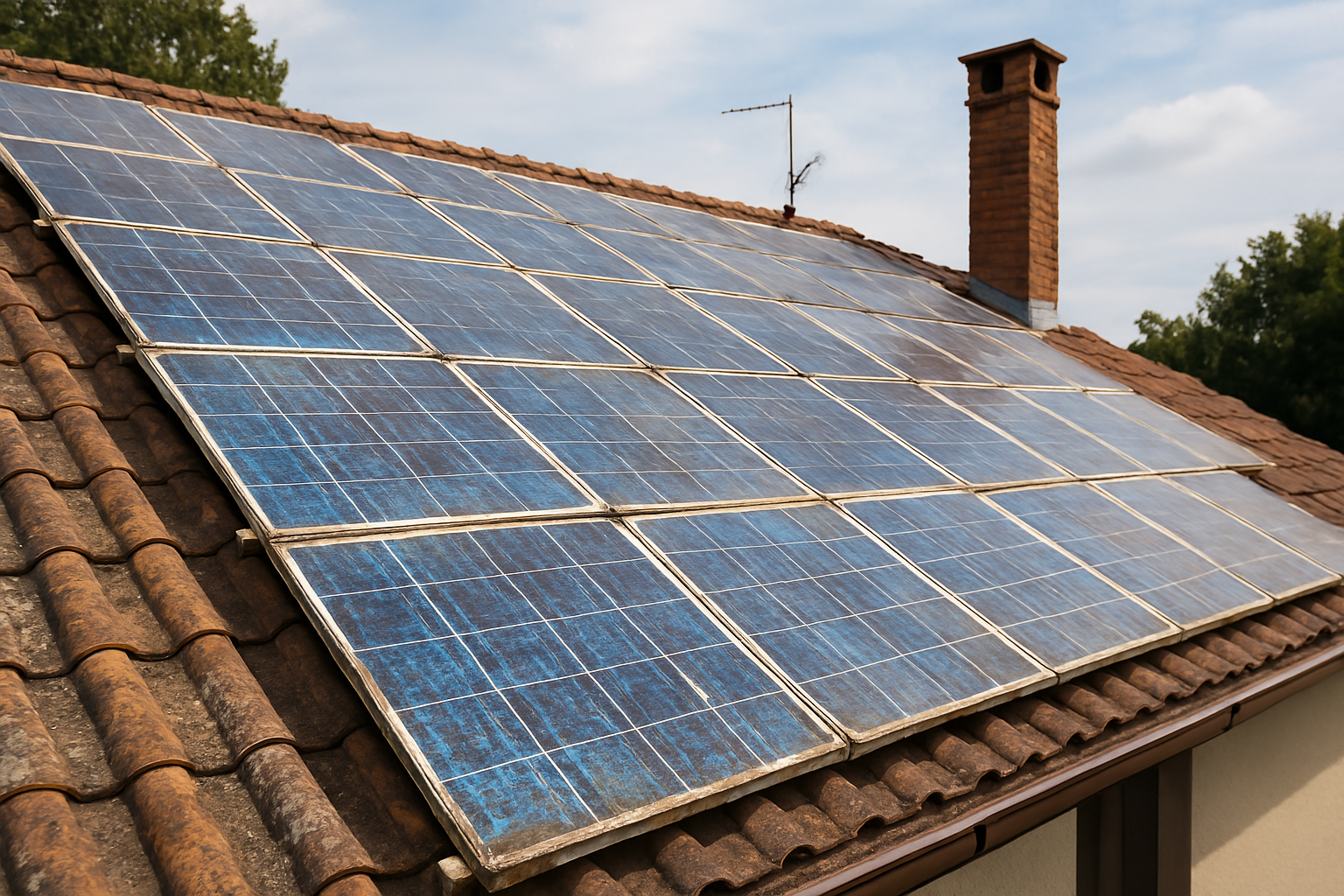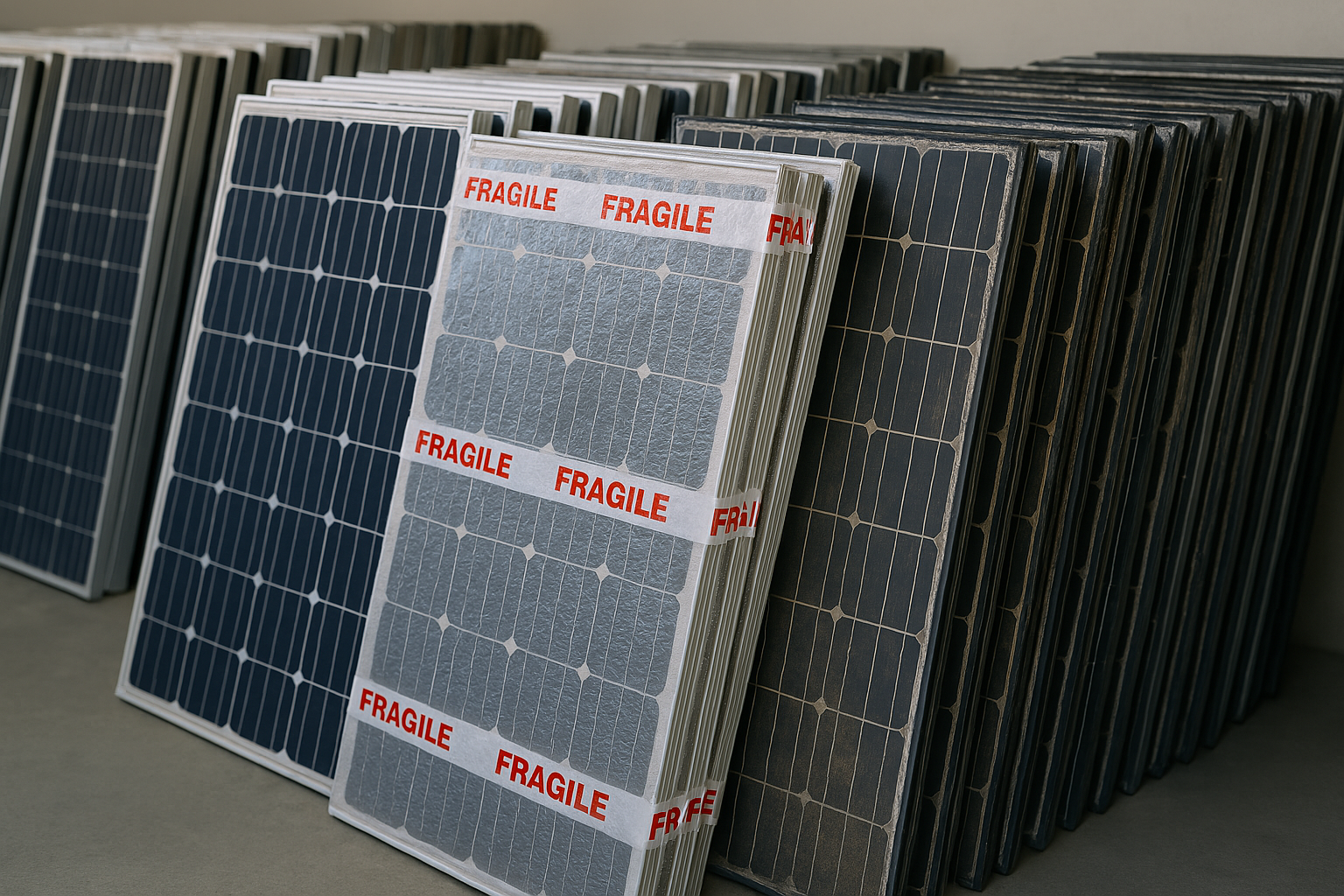Published on 23 April 2024
Photovoltaic Panel Lifespan: How Long Does a System Really Last?

How long does a solar panel really last?
It is one of the most frequently asked questions among those who are about to install a solar system and those who have owned one for years. The lifespan of a photovoltaic system does not only concern the “useful life” of the panels, but also their performance over time, the quality of the components, and the environmental factors that influence efficiency.
In this article, we will analyze how long a solar panel lasts on average, what the annual performance degradation means, how long inverters and storage batteries can last, and when it is worthwhile to replace or resell used modules. We will guide you with real data, comparisons between technologies, and tips to extend the life of your system and maximize its value, even after 20 or 30 years.
How long does a solar panel last? Real useful life and average estimate
A solar panel, under normal conditions, has an average estimated lifespan between 25 and 30 years. This is the so-called “useful life,” meaning the period in which it continues to produce energy efficiently without requiring replacement.
However, it is important to know that there is no specific point at which it “stops working.” The decline is gradual, and many panels can still function well even after thirty years. Nevertheless, at a certain point, production drops to such a level that upgrading becomes more convenient.

Why does the performance of solar panels decrease over time?
The lifespan of a solar panel is closely linked to its annual degradation, meaning the physiological loss of efficiency year after year. This is a natural phenomenon, mainly due to the degradation of the silicon with which the modules are made.
On average, the performance decline is between 0.5% and 0.8% per year. Some panels can even reach 1%. This means that a 3 kW system that today produces 3,900 kWh/year will, after 25 years, produce about 3,100 kWh/year.
Degradation depends on various factors: materials, sun exposure, maintenance, environmental conditions, and the type of technology used.
Average lifespan of inverters, batteries, and other system components
A photovoltaic system is not made up of panels alone. There are other key elements, each with its own useful life:
Inverter: lasts on average 8-12 years. It is the component that converts direct current into alternating current and must be replaced at least once during the system’s lifecycle.
Storage batteries: have a variable lifespan. Lithium batteries last between 10 and 15 years (up to 12,000 full cycles), while lead-acid batteries last between 5 and 10 years.
Cabling and structures: if well installed and maintained, they can last for more than 25 years.
What affects the lifespan of a solar panel?
Not all panels age in the same way. Some conditions can accelerate wear, while others can preserve efficiency for longer. Here are the main factors:
Temperature: very high thermal excursions stress the material.
Pollution and salinity: marine environments and industrial areas require more attention.
Fine dust: can settle on the modules and reduce yield.
Charge/discharge cycles: in the case of storage, intensive use can affect battery life.
What affects the lifespan of a solar panel?
Not all panels have the same degradation curve. Under equal conditions, there are differences between technologies:
Crystalline silicon (mono or poly): the most widespread, they have good yield and an average annual loss of 0.8%.
CIS modules (thin film): perform well in low irradiation conditions.
CdTe modules (cadmium telluride): offer interesting performance even in harsh environments, with a more contained loss over time.
A well-exposed 3 kW system can produce, in Rome:
4,340 kWh/year with silicon panels
4,420 kWh/year with CIS
4,770 kWh/year with CdTe
How to increase the lifespan of a photovoltaic system
The good news is that the life of a photovoltaic system can be extended. It is enough to adopt some good practices, such as:
regular cleaning of the panels (without abrasives)
annual inspections and cable checks
performance monitoring through apps or software
timely interventions in case of anomalies or production drops
Even prevention alone makes a big difference in keeping the system efficient for as long as possible.
What to do when a solar panel reaches the end of its life?
A solar panel does not “die” suddenly. When it reaches the end of its useful cycle, there are three options:
replace it with new, more efficient panels
recycle its materials, following WEEE regulations
resell it, if it is still functional
Do you have panels to sell?
Upload them on KTSUsed panels: can they be resold? Where and how to do it
Yes. A panel may be technically outdated, but still useful. Off-grid systems, agricultural installations, and small industrial setups: there is a growing demand for second-hand panels in good condition.
KTS is the first marketplace dedicated to the buying and selling of used photovoltaic panels. Here you can:
put your decommissioned panels up for sale
receive technical support and evaluation
contribute to a more sustainable and circular supply chain

Frequently asked questions about the lifespan of solar panels
How long does a solar panel last?
On average, a solar panel lasts between 25 and 30 years. However, it does not “switch off” suddenly: it can continue to produce energy even beyond thirty years, but with a lower yield compared to the first years of use. The efficiency loss is physiological and generally slow: between 0.5% and 1% per year, depending on the module quality, maintenance, and environmental conditions.
When should solar panels be replaced?
There is no fixed deadline. Panels are replaced when the production drop is no longer sustainable compared to consumption, in case of physical damage or breakage, or when repowering is carried out to increase the overall efficiency of the system. In some cases, they are also replaced to take advantage of new technologies.
How can you tell if solar panels are damaged?
The most common signs of a damaged panel are:
sudden heating of the surface (hot spot),
abnormal production loss compared to seasonal averages,
visible cracks or water infiltration,
damage to the protective glass or cables,
alerts from the system’s monitoring software (if available).
In case of doubt, it is always advisable to have a technical inspection carried out.
How long does a solar inverter last?
The inverter - the device that converts energy from direct current to alternating current - has a shorter lifespan than the panels: on average between 8 and 12 years. Some high-end models can last longer, but it is still the first component that tends to need replacement during the system’s lifetime.
How long do solar batteries last?
It depends on the technology:
Lithium batteries: between 10 and 15 years, with full charge cycles reaching up to 12,000.
Lead-acid batteries: between 5 and 10 years, but with faster wear.
The lifespan can vary depending on usage, depth of discharge, and operating temperature.
Are used panels still useful?
Absolutely yes, if still functional. Even if no longer suitable for a residential system with high energy needs, they can be reused in less energy-demanding contexts: off-grid systems, agricultural installations, greenhouses, mountain shelters, industrial projects.
Platforms like KTS make it possible to evaluate and resell them, extending their lifecycle and reducing waste.
Are you looking for used panels?
Access the marketplace